-
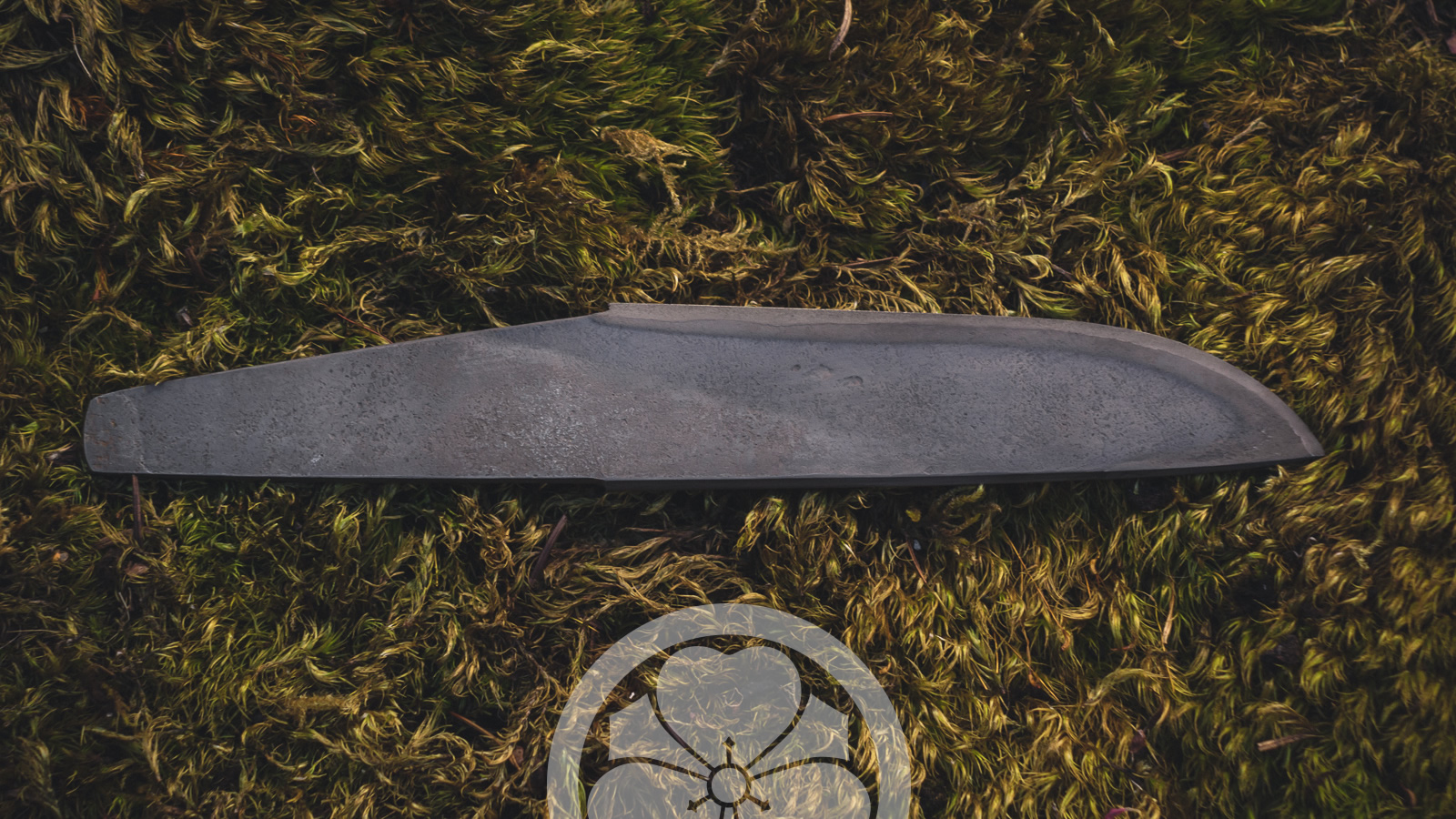
Process: Forging a Field Kotanto
This blade was named Sunagawa (砂川, sand river) because the texture of the blade and the flowing edge of the hamon are reminiscent of the bank of a calm river. It was hand forged in a charcoal swordsmith style forge powered by fuigo box bellows and water quenched with clay, an outdoor knife that has…
-
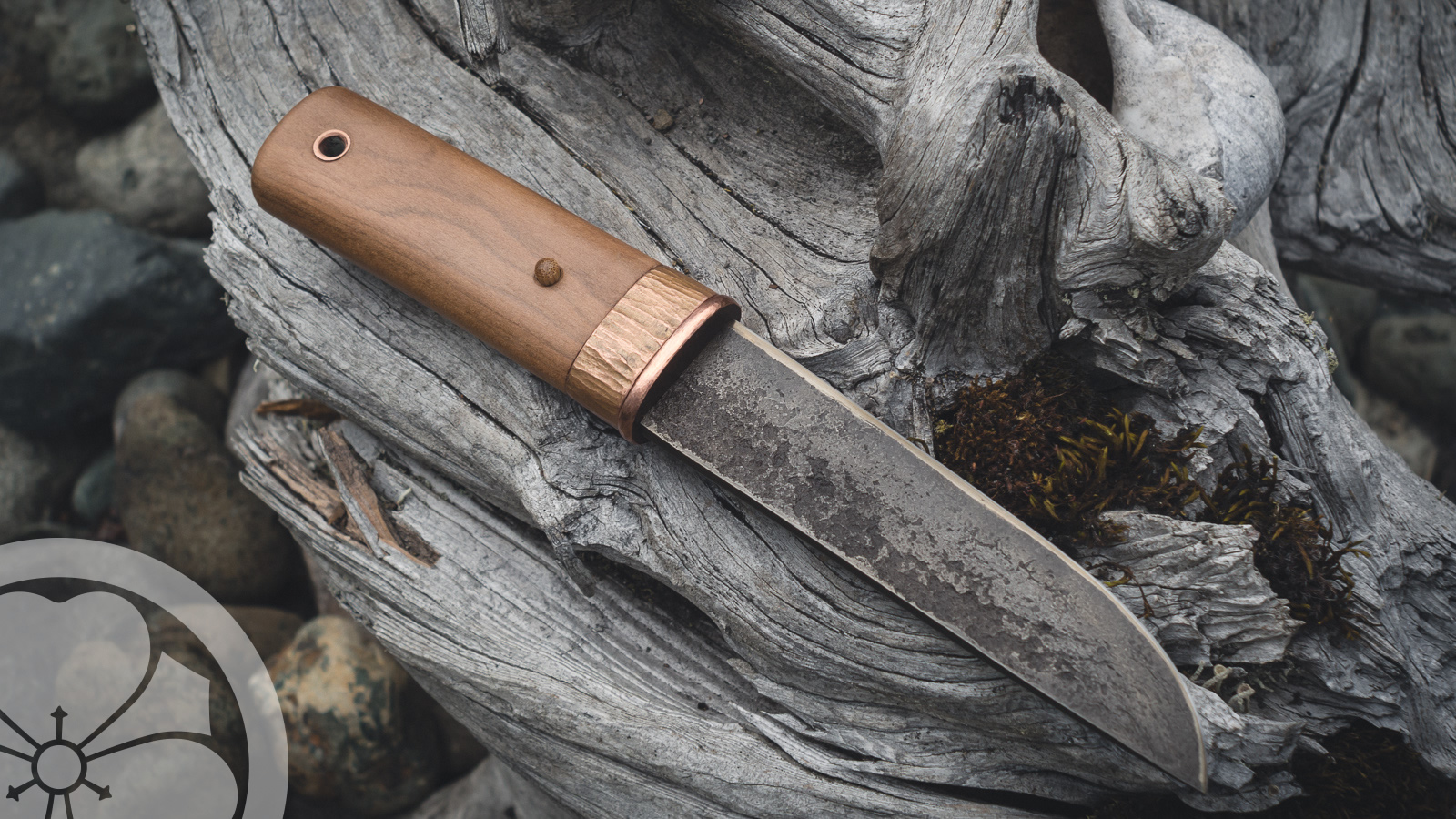
Pear Mountain Kotanto
This knife was forged from a piece of very special old steel and has been paired with part of a seventy year old pear tree and an existing leather sheath. The custom leather sheath was part of an estate sale and was hand crafted on Vancouver Island. Satoyama are the managed forest areas that border…
-

Brass Mountain Kotanto
The core of this project is a high carbon blade, charcoal-forged from reclaimed steel, water quenched with clay and sharpened with waterstones, an outdoor knife that has the foundation of the Japanese sword but is finished in the simple and humble style of farming and foresting tools of centuries ago. Satoyama are the managed forest…
-
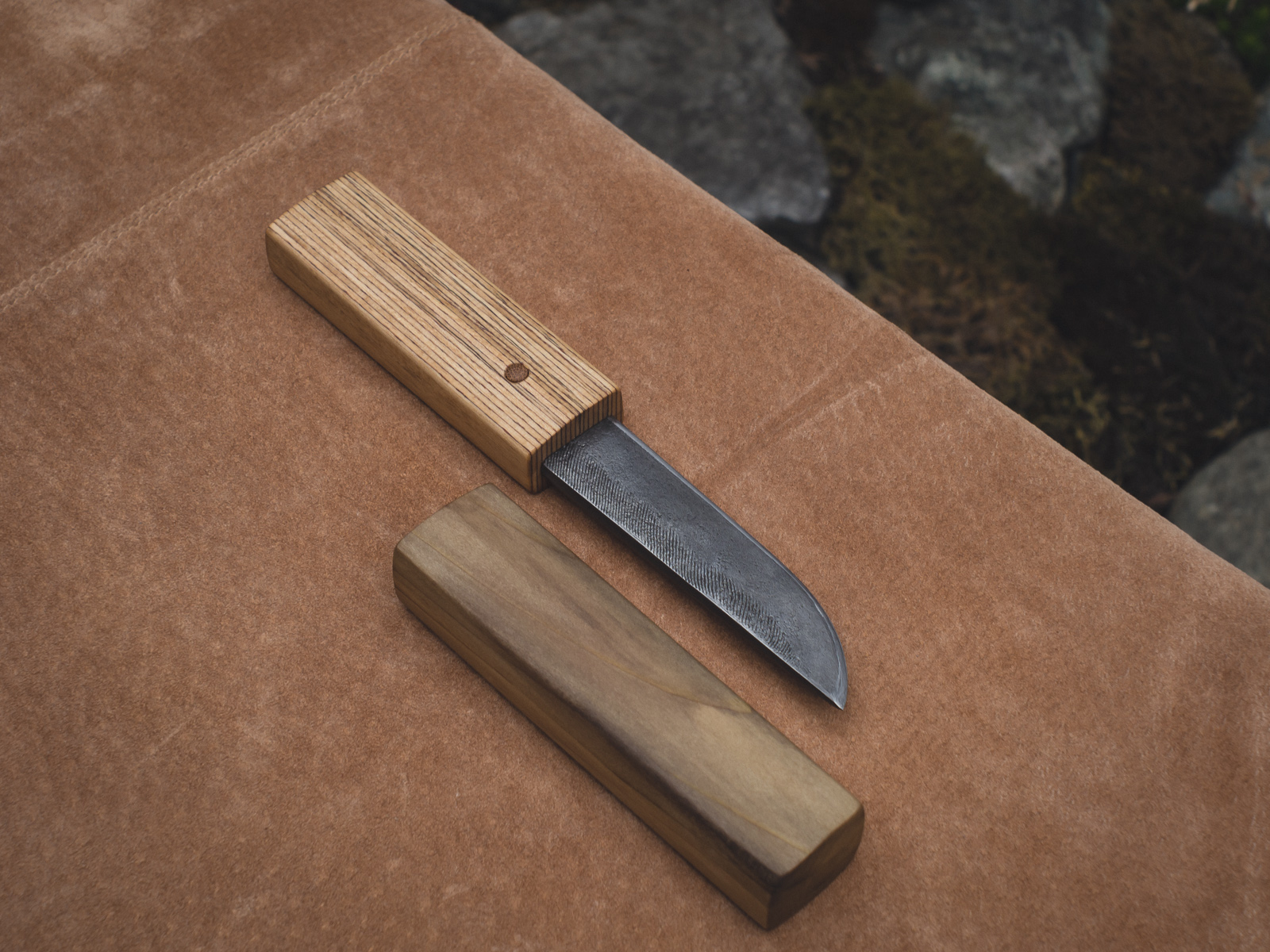
Stream Kotanto with Laminated Handle
The core of this project is a charcoal-forged blade, water quenched with clay and sharpened with waterstones, an small knife that has the foundation of the Japanese sword but is finished in the simple and humble style of farming and foresting tools of centuries ago. Satoyama are the managed forest areas that border the cultivated…
-
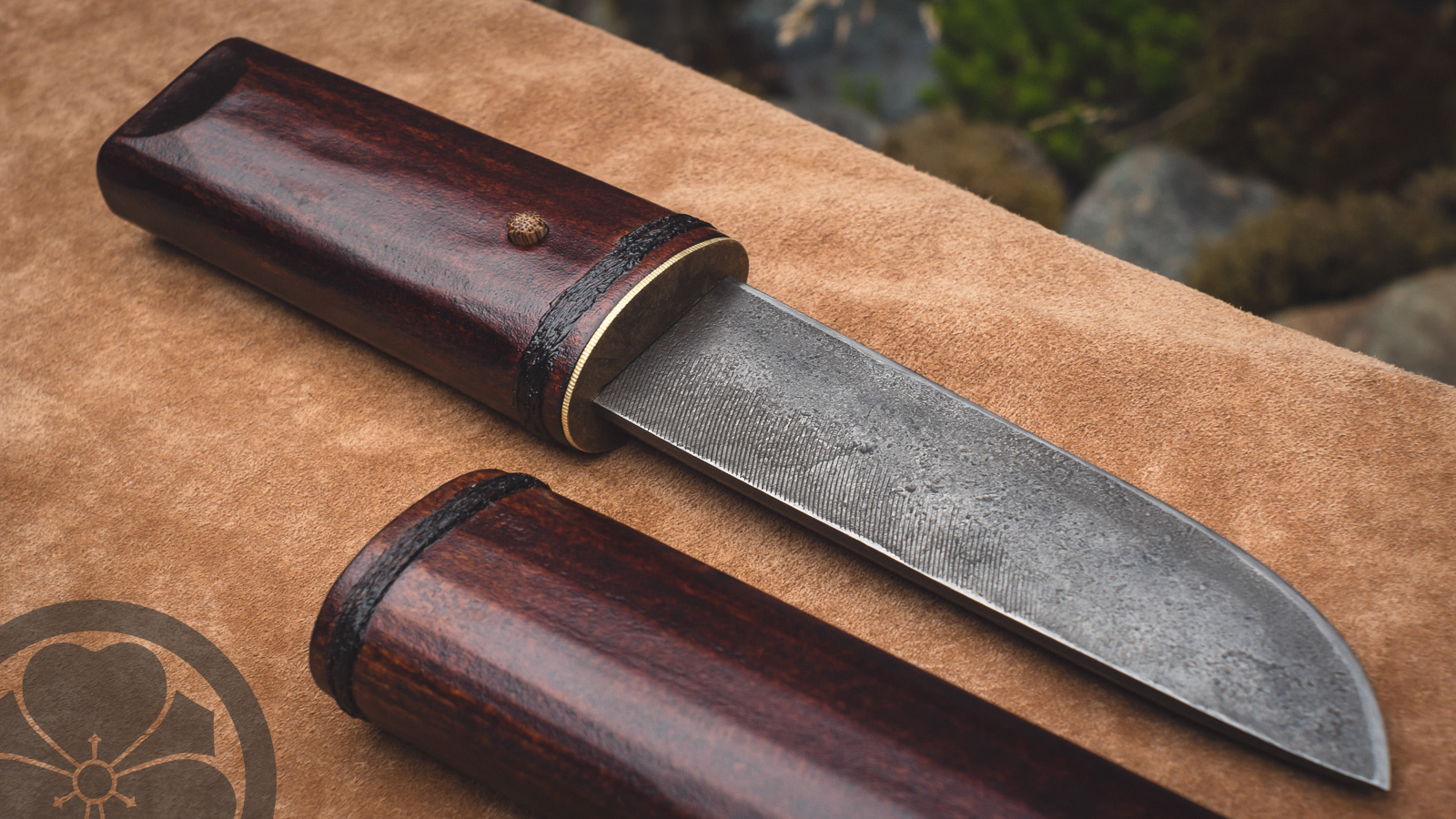
Kominka Mountain Kotanto
The core of this project is a charcoal-forged blade, water quenched with clay and sharpened with waterstones, an outdoor knife that has the foundation of the Japanese sword but is finished in the simple and humble style of farming and foresting tools of centuries ago. Satoyama are the managed forest areas that border the cultivated…
-
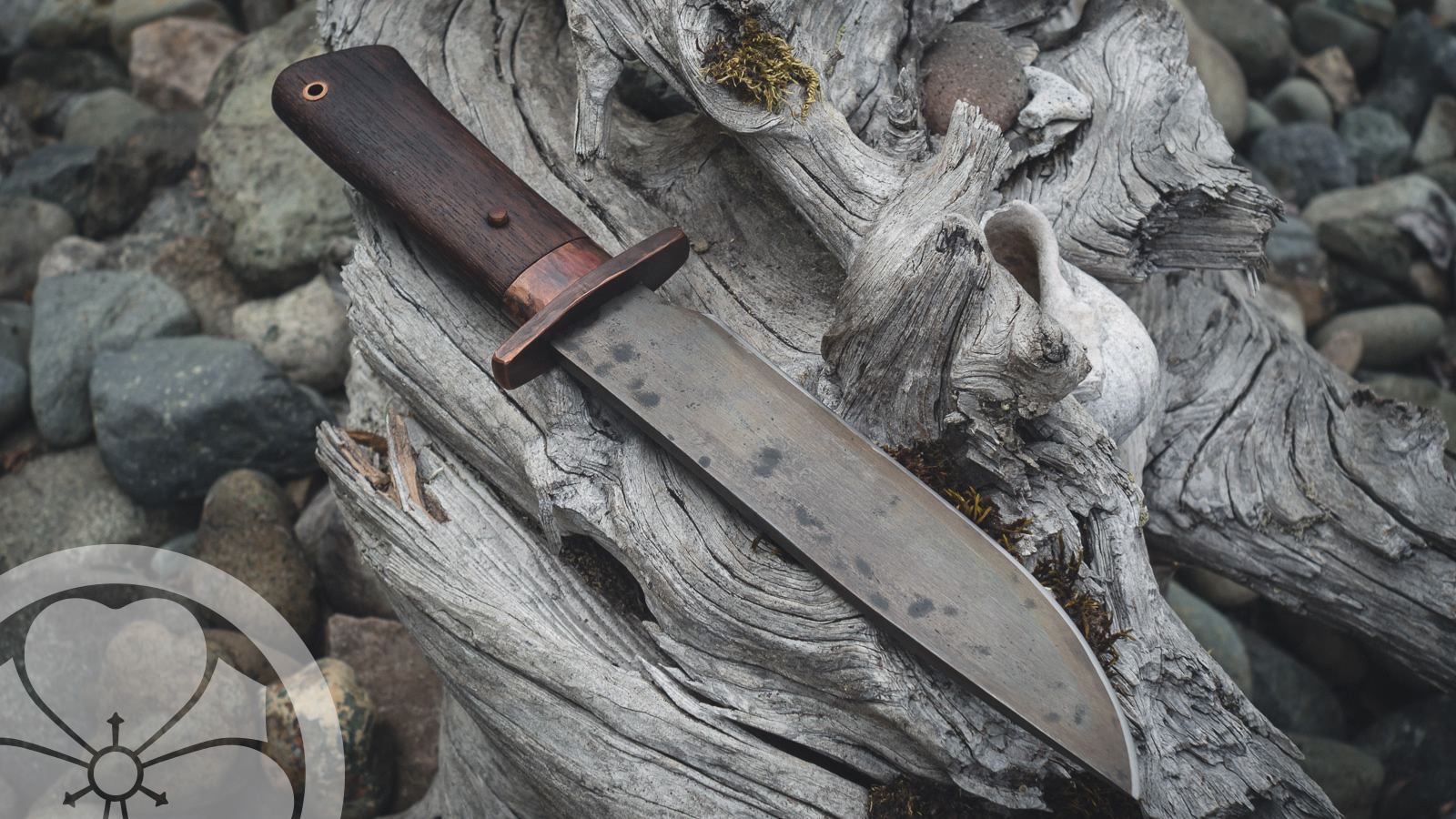
Charred Teak Bowie
An interesting project to craft a knife for an existing sheath. The like-new sheath was part of an estate sale and was custom crafted by former military Rock Leatherworks in Quebec, Canada. With some careful planning and accurate forging it can once again serve a useful purpose. The tang is constructed in a similar manner…
-

Sapele Satoyama Survival
An interesting challenge to forge a knife to fit an existing sheath. The leather sheath was part of an estate sale and was hand crafted by a custom knifemaker. With some careful planning and accurate forging it can once again serve a useful purpose. This knife should probably be considered the first official satoyama bowie,…
-

Brass Forest Kotanto
The core of this project is a high carbon blade, charcoal-forged from reclaimed steel, water quenched with clay and sharpened with waterstones, an outdoor knife that has the foundation of the Japanese sword but is finished in the simple and humble style of farming and foresting tools of centuries ago. Satoyama are the managed forest…
-
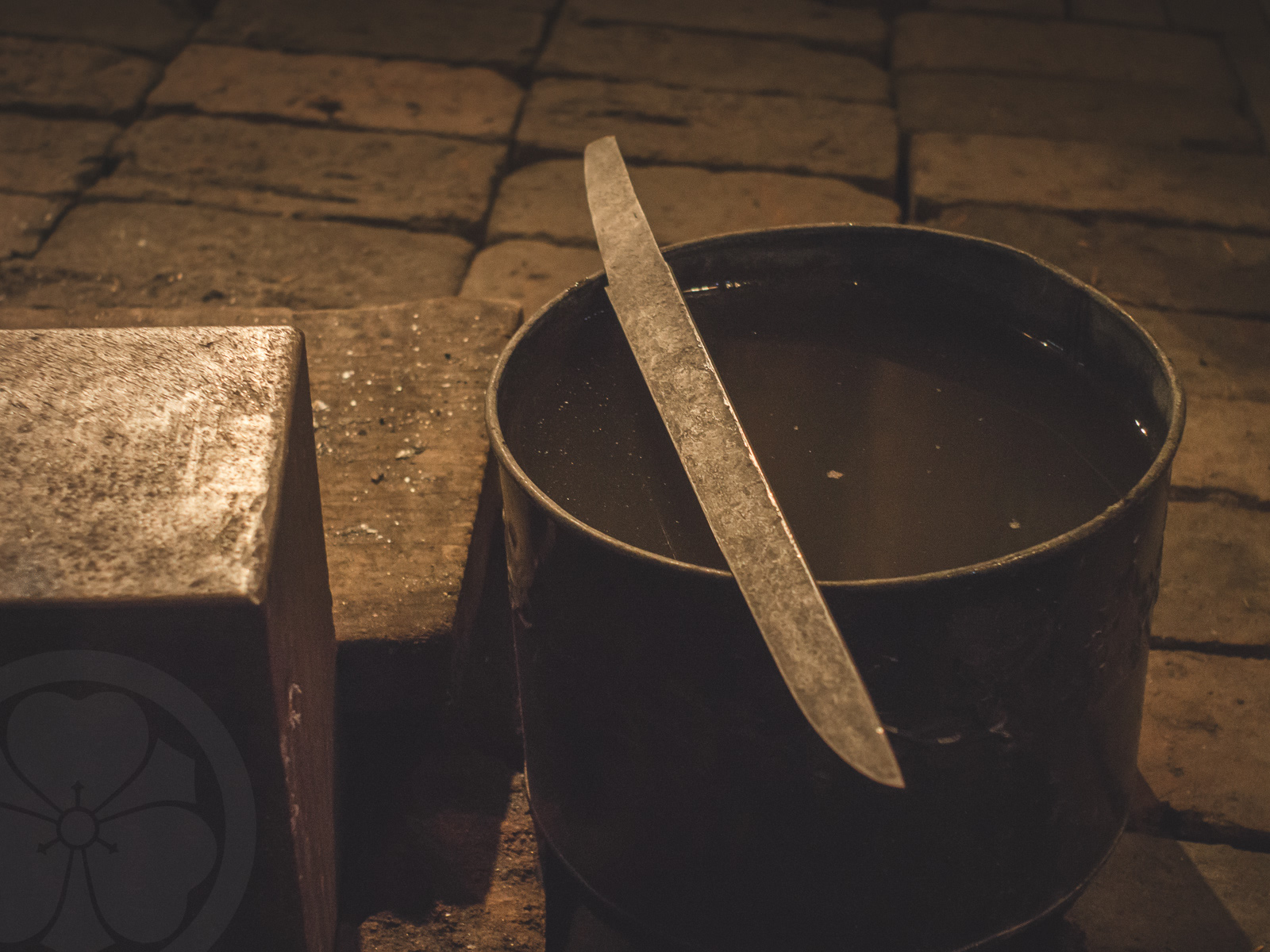
Wrought Iron Yoroidoshi Sculpture
A forging exercise leading to a sculptural tanto form for study and enjoyment, part of the Artist in Residence project at the museum. Forged from a piece of lovely fine-grained salvaged wrought iron railroad plate more than a century old. A little large for opening letters, this piece would function as a collectible, art object,…
-

Break Test for Wrought Iron
A simple test for wrought iron is to cut partway through a bar and then break off the rest. It will bend and then finally break, revealing stringy iron fibers rather than the homogeneous matte-gray internal structure of modern steel. The linear striations are caused by the residual slag left between layers during smelting and…
-

Process – Forging a Sunnobi Forest Tanto
This blade was forged and underwent yaki-ire at the museum forge. It began as a pre-1960s (integral) cultivator tine used by a farmer a generation or more ago. It is a sunnobi (overlength) tanto in the forest pattern, charcoal-forged and water quenched with clay, a satoyama style outdoor knife that has the foundation of the…
-

Making a Kanna from a Paper Cutter Blade
Craftsmen often create custom mameganna (small “bean” plane) for small wood projects requiring a custom radius or access to tight spaces. In this case a large post kanna was made from a section of industrial paper cutting blade as part of a timber framing project. Materials for this large kanna are a scrap block of…
-
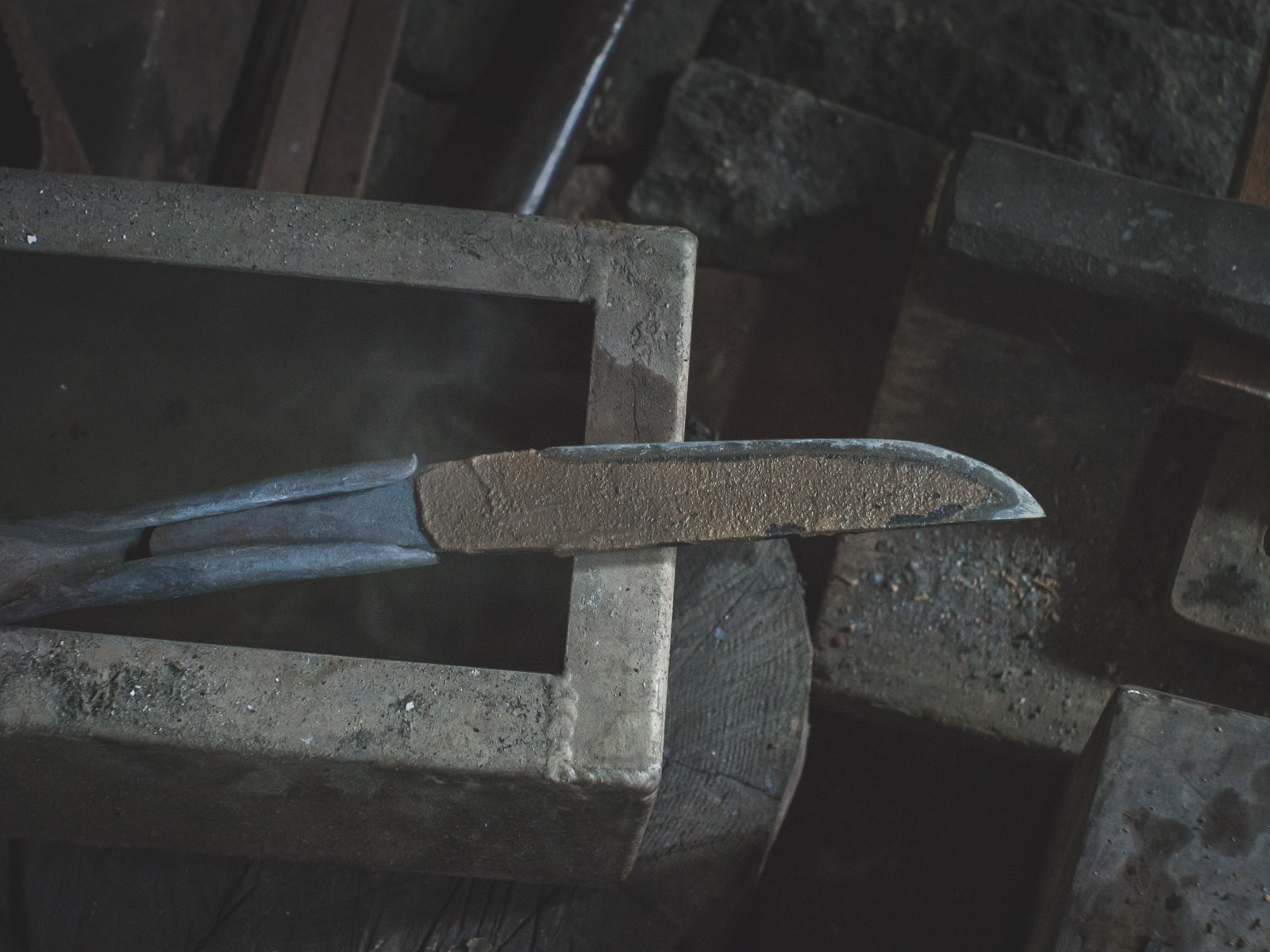
Process – Forging a Mountain Kotanto
This blade was forged and underwent yaki-ire at the museum forge. It began as a pre-1960s (integral) cultivator tine used by a farmer a generation or more ago. It is a kotanto in the mountain pattern, charcoal-forged and water quenched with clay, a satoyama style outdoor knife that has the foundation of the Japanese sword.…
-

Kominka Field Kotanto
This project was a unique opportunity to work with legacy materials to craft a useful tool that is already an heirloom. A charcoal-forged blade, water quenched with clay and sharpened with waterstones, an outdoor knife that has the foundation of the Japanese sword, finished in the simple and humble style of farming and foresting tools…
-

Yoroidoshi Forest Kotanto
The core of this project is a charcoal-forged blade, water quenched with clay and sharpened with waterstones, an outdoor style knife that has the foundation of the Japanese sword. The hamidashi mounting is in the rustic kura style and includes antique fittings from swords carried generations ago. Satoyama are the managed forest areas that border…
